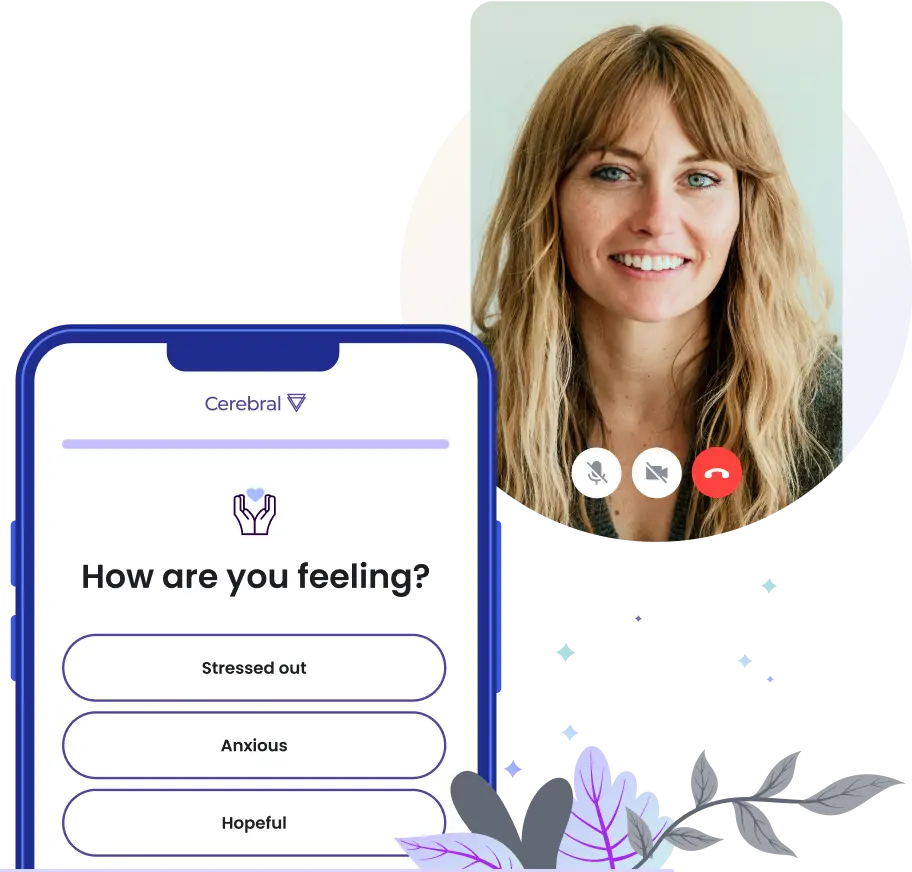With the COVID-19 pandemic, the experience of grief and other mental health issues have spiked*. Many people are struggling to understand what exactly they may be feeling. And many have lost loved ones, become unemployed, or experienced other losses during the pandemic.
If you’re dealing with intense feelings of trauma or grief, for any reason, you may be experiencing posttraumatic stress disorder (PTSD). PTSD is a serious condition that people may experience after exposure to a traumatic experience. It’s typically characterized by severe anxiety, flashbacks, nightmares, and intrusive thoughts about the event that caused it. But, the good news is that it can be treated in a number of ways.
When discussing PTSD, it’s also important to discuss grief. Grief is a strong, often overwhelming emotion that involves sadness, anger, and numbness related to or following a loss. Experiencing grief or bereavement after a loss is extremely common and a completely normal reaction. But if that grief turns into trauma or cannot be overcome, it may be linked to PTSD.
Like grief, another emotion closely linked with PTSD is trauma. Trauma is the emotional response to experiencing a dangerous or frightful situation. This response can be different for everyone. And the triggering situations commonly includes things like natural disasters, combat, physical violence, or sexual assault.
Like a lot of other mental health conditions, people who have PTSD often experience it differently from one another. Also, many people who experience trauma might not meet all the criteria for PTSD, but that doesn’t make their experience any less valid.
Although PTSD isn’t as common as anxiety and depression, it isn’t exactly rare either. In fact, PTSD affects 3.5%** of the U.S. population. That’s over 10 million people.
What are symptoms of PTSD?
Most people who go through traumatic events may have temporary symptoms. It can be difficult to cope, but most people typically recover from trauma over time.
However, you may have PTSD if:
- your symptoms get worse
- your symptoms cause significant issues in social or professional situations
- your symptoms impact your relationships or interfere with your ability to complete daily tasks
Symptoms of PTSD typically start within one month of the traumatic experience. Sometimes, they might not appear until years after the event.
PTSD Symptoms are typically grouped into four categories:
1. Avoidance
Avoidance means you actively avoid people, places, or situations that might remind you of the traumatic experience.
2. Intrusion
- flashbacks or feeling like you’re reliving the traumatic event
- frequent nightmares about or related to the event
- overly vivid, detailed, and uncomfortable memories of the event
- intense distress when thinking about the event and effort to suppress your thoughts about the event
3. Cognition and mood
- difficulty remembering certain details about the event
- disproportionate feelings of guilt, shame, or blame, especially surrounding the event
- generally negative thoughts or feelings about oneself
- reduced interest or pleasure in usual activities
4. Arousal and reactivity
In this last category, symptoms may include:
- difficulty concentrating (in general and due to intrusive thoughts)
- being easily startled or having an exaggerated response when startled
- persistent feelings of irritability
- bursts of anger and feeling like you are “on edge”
What other conditions are associated with PTSD?
When experiencing intrusive thoughts or flashbacks associated with PTSD, many individuals can often experience a panic attack.
Symptoms of a panic attack can include:
- chest pain
- dizziness
- sweating,
- difficulty breathing
- an accelerated heartbeat
PTSD can also exist in tandem with several other mental health conditions. Some of these include:
- anxiety and anxiety disorders
- depression
- substance misuse and abuse
- alcoholism
- increased risk of suicide
Who’s at risk of developing PTSD?
People of all ages are affected by PTSD. However, women are twice as likely as men to develop it.
There are also certain factors that can make you more at risk, such as:
- having other mental health conditions previously, especially panic disorder or OCD
- having a relative with a mental health condition
- having experienced previous trauma, especially childhood abuse
- having smaller hippocampal volume. The hippocampus is the region of the brain that regulates emotional memories.
- Having abnormal levels of cortisol in the brain. Cortisol is a stress hormone that controls our “fight or flight” response.
How is PTSD treated?
PTSD can impact relationships and daily life, making it difficult to work, sleep, or function. Because of the stigma associated with PTSD, many people may feel guilty or blame themselves for their traumatic experience. This may make them afraid to tell their loved ones or seek professional help.
Fortunately, treatment is greatly effective in reducing the symptoms and distress associated with PTSD. And PTSD can in fact be treated online.
Although PTSD is different from anxiety and depression, it’s treated similarly. Treatment typically includes SSRI medication, psychotherapy, and daily lifestyle changes. The most common and successful therapies for PTSD include cognitive behavioral therapy (CBT) and exposure therapy, which involve identifying triggers and talking through the traumatic event in a safe environment to help process it.
Cerebral can treat PTSD with medication, cognitive behavioral interventions, and talk therapy. Our trained psychiatric specialists, therapists, and Care Counselors can build a custom treatment plan for you, and your care team is flexible, depending on which plan you choose.
And because it’s all conveniently online, you can get the treatment you need from one convenient place, even without having to leave home!
Medically reviewed by: David Mou, MD, MBA
*https://psycnet.apa.org/fulltext/2020-37338-001.pdf
**https://www.psychiatry.org/patients-families/ptsd/what-is-ptsd#:~:text=PTSD%20can%20occur%20in%20all,as%20men%20to%20have%20PTSD.

Differences in PTSD by Gender Identity

Addressing Suicidal Thoughts: A Guide for Suicide Prevention

Online Care Expands Access to Veterans' Mental Health Services

Call 911 if you’re having a
mental health emergency
Text Home to 741-741 if you're in emotional
distress and need immediate support
Call or text 988 Suicide &
Crisis Lifeline. Chat service
is available at 988lifeline.org.